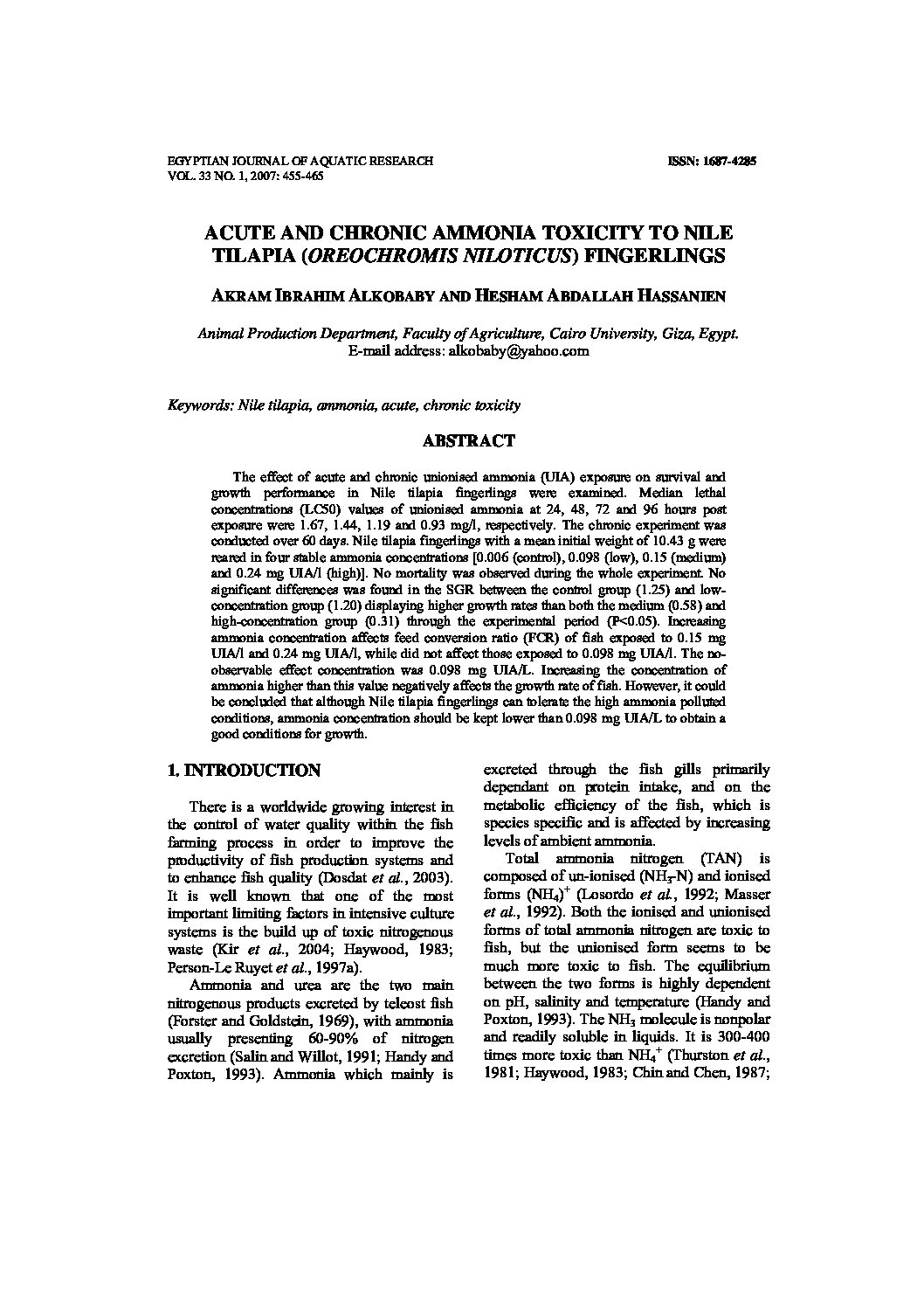Categories
vol-33STATUS OF CORAL REEF AFFECTED BY DIFFERENT
IMPACTS IN SOME SITES OF THE RED SEA
M. S. A. AMMAR*, A. A. GHOBASHI**, M. A. OMRAN**, A. M. SHAABAN*
* national institute of oceanography and fisheries
** zoology department, faculty of science, suez canal university
[email protected]
Keywords: Coral reefs, Red Sea, Human activities, Hydrocarbons, Phosphate, Recreation,
Acanthaster planci
ABSTRACT
Using Using SCUBA diving, surveying the coral reef communities at four sites, Red
Sea Egypt was done. These sites are: Ras El Behar (polluted by petroleum oil), ElHamraween (impacted by phosphate shipping), Shabrour Umm Gam’ar (harmed by
recreational activities and has been suffering from the outbreak of Acanthaster planci
during 1998) and Kalawy (a control site). The skeletal growth of the coral Stylophora
pistillata was promoted greatly at the expense of other corals, in presence of chronic oil
pollution (Ras El-Behar). In contrast, this species was completely suppressed in presence of
phosphate and sulphur enrichment. Petroleum oil led to coral scarcity, space
monopolization by one coral and increased sea urchins and algae. Coral reefs enriched with
phosphate in the field, surprisingly was accompanied by extraordinary well flourishing
corals. El-Hamraween was the only site having as higher number and abundance of
Acropora as the control site. The abundance of Porites and Pocillopora was higher than the
control site. Shabrour Umm Gam’ar, the site suffering from Acanthaster planci outbreak
during 1998, was characterized by soft corals which were more abundant than stony corals,
indicating that soft corals have higher rate of growth and recovery than stony corals after
Acanthaster planci attack. Hydrocorals were abundant in the control site (kalawy).







